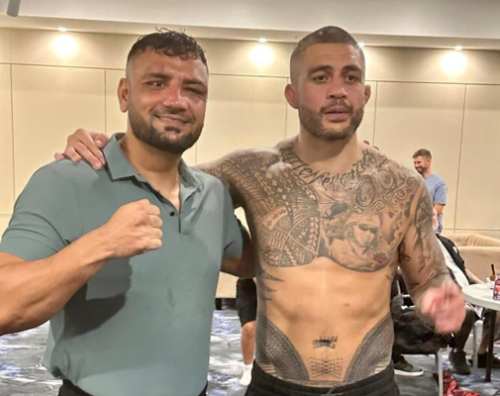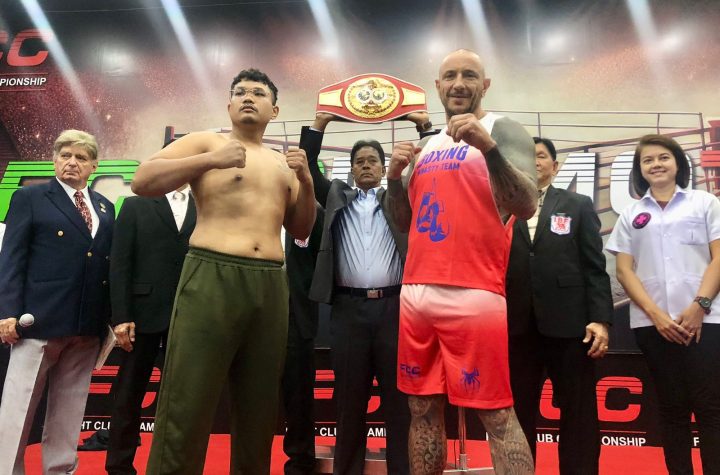
By Mike Chiappetta@MikeChiappetta
MMAfighting.com
For the early part of his life as a mixed martial artist, Anthony Smith was a certifiable journeyman. He started his professional career going just 5-6. In 2010, he fought six times in six different organizations. In 2013, he fought three times in three different organizations, losing in both Strikeforce and the UFC in the same calendar year. The last of those losses came to Josh Neer, a gritty and durable veteran who spent most of his career as a welterweight.
It’s difficult to imagine that from there, Smith would find a trajectory that would place him in the present day, where he’s set to face one of the greatest fighters of all time, Jon Jones, for the UFC light heavyweight championship at UFC 235. In fact, it’s almost unfathomable. Yet here we are.
In some ways, his recent fight against Volkan Oezdemir serves as a microcosm of his career. In that bout, he got off to a rough start. Oezdemir chopped down Smith’s lead leg early, then took almost complete control in the second, scoring a takedown and hunting submissions for the last several minutes of the frame. Smith looked positively overmatched. Yet in the third, he landed the tail end of a double body jab/overhand right combination that hurt Oezedmir, and the entire complexion of the fight soon changed. Smith was suddenly flush with confidence, unleashing his full and varied offensive arsenal en route to a submission stoppage.
After all these years of watching Jones, his game is well known, though always evolving. The question is whether Smith has enough to stop it.
Offensively, Smith has plenty of tools to work with, as evidenced by his record; he has 28 stoppages in his 31 victories. Fighting out of an orthodox stance, the 30-year-old has put a renewed emphasis on his jab in recent fights. Still, his best strikes are a check hook that he lands quite often against onrushing opponents, as well as his straight right.
Smith has good fundamental footwork, which he displays while circling and angling away from dangerous positions. At times, particularly in the early moments of fights, he is quite disciplined with it. At other times, he is known to abandon it in order to chase down opponents.
His Muay Thai is quite dangerous, particularly out of the clinch, where he favors sharp elbows and pointed knees. He is quite crafty in close quarters, as Rashad Evans experienced the hard way at UFC 225. In that fight, Evans seemingly had Smith stacked up against the cage early in the first round. Smith cinched an overlook on his left side, and snaked his right hand inside Evans’ near shoulder. Using his height, he slowly, almost casually, forced Evans off-balance and his head downward, where Smith met it with a hellacious knee.
Smith also has excellent traditional power. He wobbled Shogun Rua with a straight right off his back foot that led to the end. He put Santos down with a check hook. He starched Hector Lombard with a sharp right. He has weapons.
His shortcomings have always been on defense. Here are two major ones that threaten to sink him against Jones: according to UFC Stats, Smith successfully defends only 46 percent of the strikes that come his way, as well as 46 percent of the takedowns attempted against him. Historically, he has been out-struck by opponents, a fact that bodes ominously against Jones, who usually doubles the output of his foes.
Jones has most of the advantages, as expected. He is taller (even though both are listed as 6-foot-4, take a look at the staredown), has longer reach (84.5 inches to 76), has loads of championship experience, and brings with him a savage and indomitable mindset.
Jones loves to beat opponents at their own game. He handled Alexander Gustafsson in the striking department in their rematch, out-wrestled Daniel Cormier, out-toughed Glover Teixeira. Smith’s best opportunity at winning this and pulling off perhaps the biggest upset in MMA history is to create a gritty and grimy fight with little rhythm. And yet it wouldn’t be surprising if Jones played along with it, just because he can. He is incredibly adaptable in both mind and technique.
Because Jones loves to attack the legs, and Smith has proven susceptible to low attacks, expect him to establish that in the early going. Smith is at his best with forward momentum, and so he will have a decision to make in how he attempts to advance his offense (and all of the possibilities lead to more danger).
For most of his career, Jones’ boxing was perhaps the weakest point of his stellar game. But even that has shored up, as evidenced by his performances in rematches with Daniel Cormier and Gustafsson. He can straight up box now, and do so with the best.
Wrestling-wise, it isn’t a contest. Jones is better both traditionally and functionally, and will most likely be able to put Smith on his back with frequent success, if that’s what he wants to do.
If it goes there, while Smith is a jiu-jitsu black belt and Jones is a blue belt, that hardly tells the story, as Jones has done very little training in a gi. In an MMA context, his jiu-jitsu and ground game is world-class. From the top, he can do it all, from slicing through guards to slicing elbows, he is nearly unstoppable there. Smith has 11 submission wins, so he is no slouch, but if he’s working on the ground in this fight, it will likely be from his back. Jones leaves very few openings from there.
The matchup is undoubtedly stacked in Jones’ favor. He is favored by as high as -1450 on some books, as many expect a rout.
Smith is no longer the journeyman he once was. He has gone 14-2 in his last 16 fights, and displays a valuable confidence to his game. But this is Jon Jones. Unless Jones completely discounted Smith as he famously did against Gustafsson the first time around, he is the superior fighter, and he has the tools to make it a difficult night for Smith. Expect low kicks early, Jones’ establishing his dominance in the clinch, and takedowns leading to victory. Jones in a second-round TKO.





More News
Unconscionable Betrayal: Tyson Pedro Camp’s Shameful Swindling of Taimoor Khan
Casimero TKO’s Sanchez in 1st round
Raquinel wins WBC Continental Americas super flyweight title